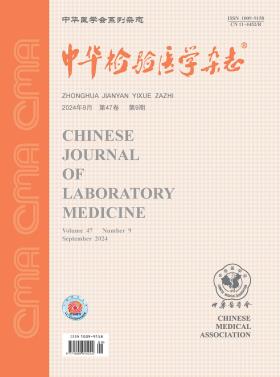冠状动脉疾病患者循环白细胞中SREBP-2启动子甲基化与相关危险因素相关
Q4 Health Professions
引用次数: 0
摘要
目的探讨冠心病(CAD)患者甾醇调节元件结合蛋白-2 (SREBP-2)启动子甲基化与miR-33a表达及血清标志物的相关性。方法采用病例-对照研究。本研究招募了100名于2017年8月至2018年4月在湖北医科大学太和医院接受冠状动脉造影的参与者。通过焦磷酸测序,在50例冠心病患者和50例非冠心病对照组中检测了两个片段的甲基化水平,其中包括SREBP-2启动子区域的12个CpG位点。采用qPCR和常规生化方法检测血清miR-33a水平和一组15种CAD相关生物标志物。结果冠心病患者SREBP-2启动子区1个CpG位点(F1-4位点)甲基化水平显著高于对照组(4.56%±0.70% vs 3.54%±0.72%,t=-3.864, P<0.001);F1-4位点甲基化水平与血清miR-33a水平和高密度脂蛋白胆固醇(HDL-C)水平呈负相关(r=-0.318, P=0.001;r=-0.225, P=0.024)。此外,F1-4高甲基化是CAD的独立危险因素,与年龄、性别、高血压、高脂血症和糖尿病病史无关(OR=2.452, 95%CI=1.398-4.299, P=0.002)。结论DNA甲基化和miRNA可能共同调控冠心病患者的脂质代谢。关键词:冠心病;甾醇调节元件结合蛋白2;DNA甲基化;小分子核糖核酸;脂质代谢紊乱本文章由计算机程序翻译,如有差异,请以英文原文为准。
Promoter methylation of SREBP-2 in circulating leukocytes correlates with relevant risk factors in patients with coronary artery disease
Objective To examine the correlation between the promoter methylation of Sterol regulatory-element binding protein-2 (SREBP-2) and miR-33a expression as well as serum markers in patients with coronary artery disease (CAD). Methods The case-control study. 100 participants who underwent coronary angiography from August 2017 to April 2018 in TaiheHospital, Hubei University of Medicine, were recruited in this study.The methylation level of two fragments, including 12 CpG sites in the promoter region of SREBP-2, have been detected by pyrosequencing in 50 patients with coronary artery disease (CAD) and 50 non-CAD controls. Serum miR-33a level and a panel of 15 CAD related biomarkers were examined by qPCR and routine biochemistry methods. Results Methylation level of one CpG site (F1-4 loci) in SREBP-2 promoter region were significant higher in CAD patients than in controls(4.56%±0.70% vs 3.54%±0.72%, t=-3.864, P<0.001); methylation level of F1-4 site was negatively correlates with the serum miR-33a levels and high-density lipoprotein cholesterol (HDL-C) levels(r=-0.318, P=0.001; r=-0.225, P=0.024, respectively). Furthermore, F1-4 hypermethylation was an independent risk factor of CAD, independent of age, gender, histories of hypertension, hyperlipidemia, and diabetes(OR=2.452, 95%CI=1.398-4.299, P=0.002). Conclusion These results suggest that DNA methylation and miRNA might cooperate to regulate the lipid metabolism in CAD. Key words: Coronary disease; Sterol regulatory element binding protein 2; DNA methylation; microRNAs; Lipid metabolism disorders
求助全文
通过发布文献求助,成功后即可免费获取论文全文。
去求助
来源期刊

中华检验医学杂志
Health Professions-Medical Laboratory Technology
CiteScore
0.40
自引率
0.00%
发文量
8037
期刊介绍:
 求助内容:
求助内容: 应助结果提醒方式:
应助结果提醒方式:


